With the affectionate nickname of custard-head, it should be easy to recognise the mohua (yellowhead). Their bright yellow plumage donning their heads should be a giveaway, right? Wrong. Did you know mohua have an avian impersonator? Here we take a look at these fascinating birds, their interesting quirks, and the biggest challenges to their survival.
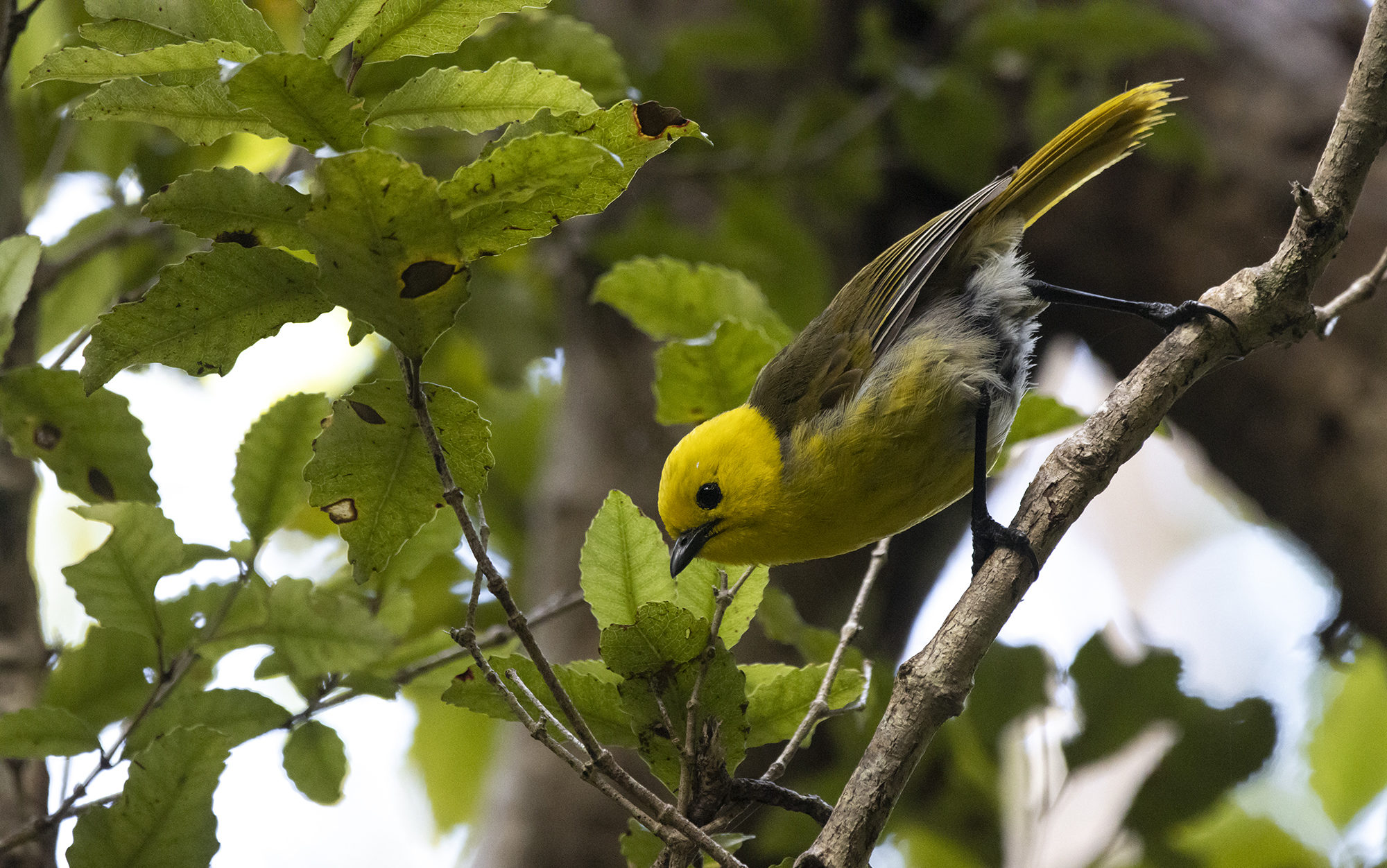
1. Mohua, or look-alike?
Mohua can be confused with the similar-looking male yellowhammer. Can you tell them apart?
Maybe not – because the easiest way to identify the mohua from its introduced look-alike isn’t by a photo. It’s by knowing the type of landscape you’re seeing them in.
These birds don’t live in the same habitats. Mohua don’t leave their beech forests and yellowhammers don’t enter them – preferring open country. So if you’re in a beech forest in the South Island and you see a flash of yellow amongst the trees, you might have just spotted a mohua.
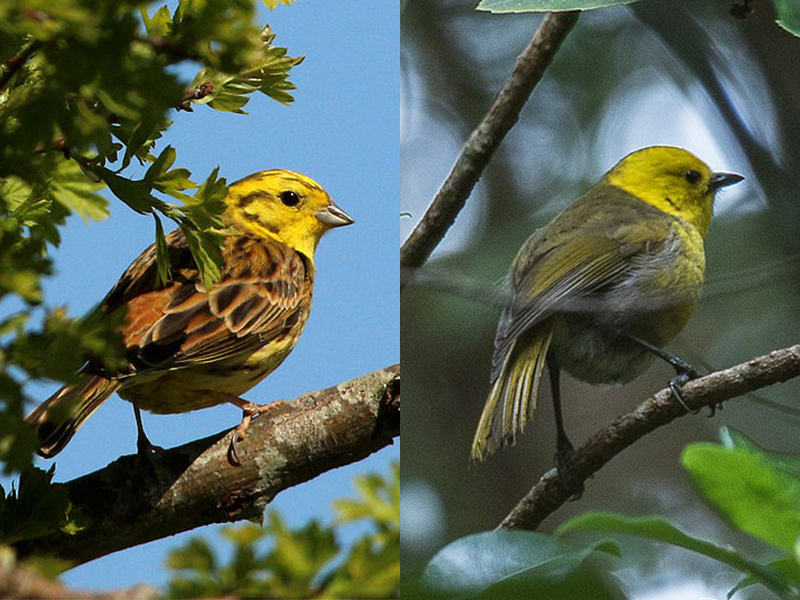
2. A clever hiding spot turned death trap
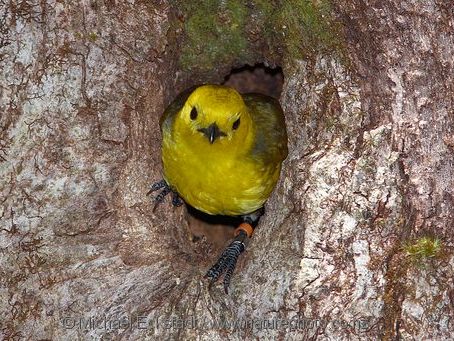
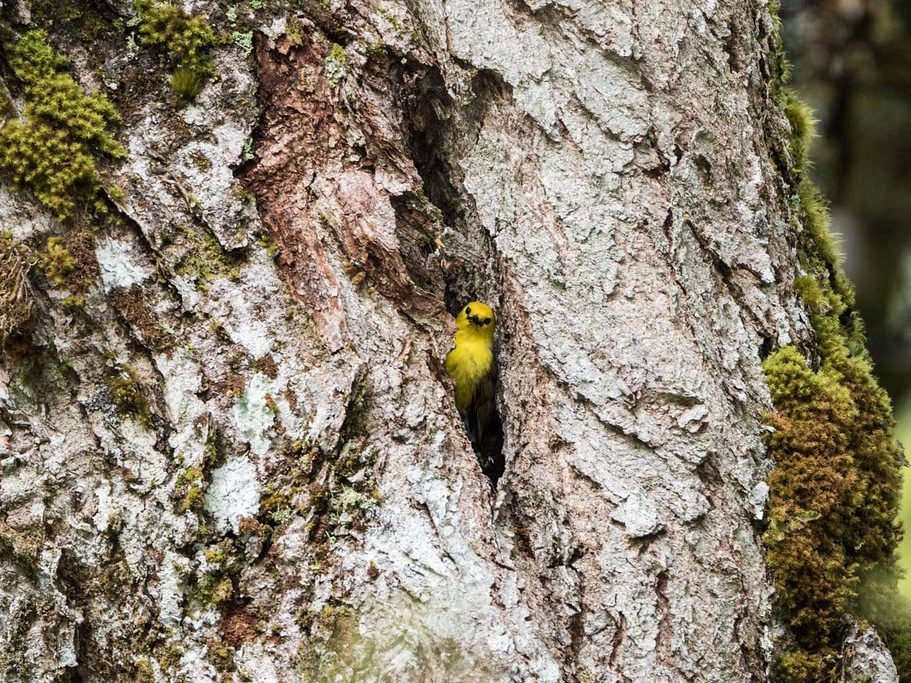
Mohua nest in tree holes – a defence mechanism they evolved to hide from our native birds of prey such as the ruru (morepork) and kārearea (falcon). But when stoats and rats were introduced into Aotearoa New Zealand, this clever nesting spot became a death trap.
For mohua, the female takes sole responsibility for sitting on her eggs in a tree hole nest. For the three weeks that the female is incubating her eggs, she is in danger. There is no escape route for her when rats and stoats invade her nest. And when they attack, they will kill her along with her eggs and chicks. Because of this, the gender of mohua populations are often highly skewed, with more males than females.
To make matters worse, mohua nest later in the spring than most other forest birds, which means they are still nesting when stoat numbers hit their peak in the summer.
But, there’s good news. Unlike other threatened species, mohua can reproduce at a high rate. Each year mohua can lay up to four eggs and can raise two broods. That means that when effective predator control is in place, mohua populations recover extremely well.
Just 14 mohua lived in the Landsborough Valley before predator control began. In a survey done last year, that number has soared to 485 birds.
3. A balancing act
When you’re foraging around a tree looking for insects to feast on, how do you keep your balance? With your tail, of course – if you’re a mohua.
Mohua have rigid tail feathers that they use to prop themselves up as they feed. Over time, their tail feathers become worn and can end up looking like bald spines. That’s when they’re moulted.
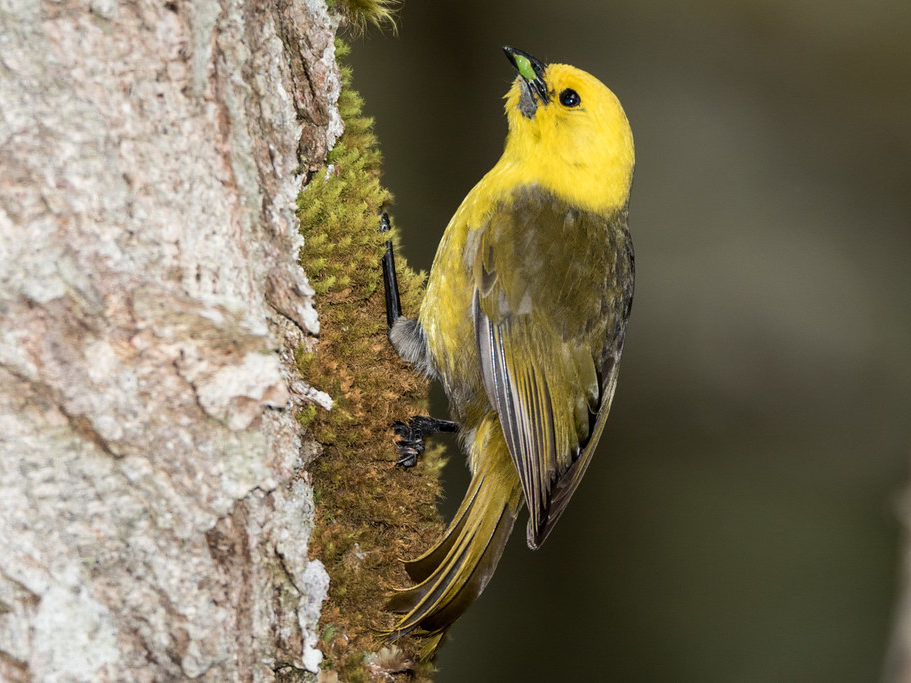
4. Mohua raise imposter chicks
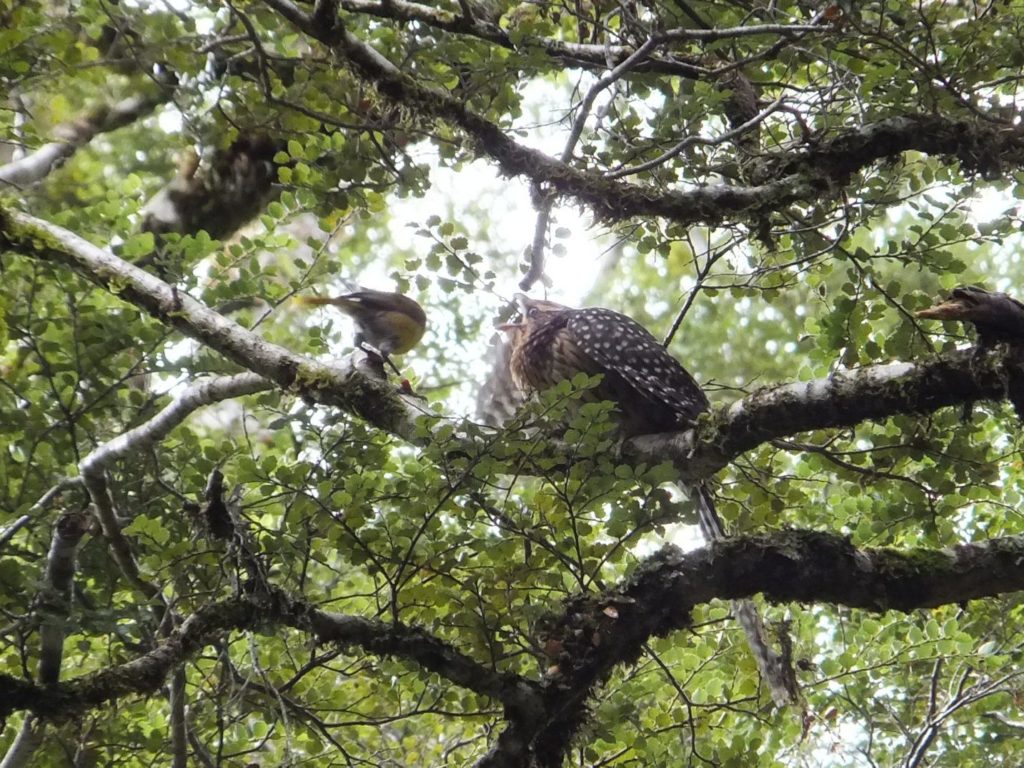

Every spring, mohua are the unsuspecting victims of some very lazy parents.
Koekoeā (long-tailed cuckoos) take a very hands-off approach to their parenting. They’re brood parasites, meaning they take no part in raising their young. Instead, they will search for a host’s nest, lay their one egg and fly away.
Mohua parents are none the wiser to the imposter egg laid in their nest. They will incubate and raise it as if it was their own. Once the koekoeā chick hatches it will kick the mohua’s eggs or chicks out of the nest.
The koekoeā chick quickly dwarfs its adoptive parents. By adulthood, it will weigh four times as much as its parents. As you can imagine, feeding this big chick keeps both parents busy collecting insects.
There’s no denying that mohua are getting a raw deal, but are koekoeā having a big impact on their population?
Koekoeā are native summer migrants to New Zealand, so they’ve evolved this parasitic relationship with their hosts over a long period of time. There is no evidence that these lazy parents have a significant impact on mohua. The big threats for mohua are habitat loss and introduced predators.
5. Where have all the mohua gone?
Mohua were once a common bird. When European settlers arrived, they observed mohua flocking together in large groups, their chattering calls echoing in forests across the South Island.
But colonisation was not kind to our mohua. Large parts of the forests they lived in were logged and became farmland. With less habitat, mohua populations shrank. And having evolved no defences to them, mohua were easy prey to introduced stoats and rats.
By 1900, mohua were quickly disappearing from our forests.
Mohua are now absent from 75 percent of their historic range. They live in small scattered populations throughout the South Island and on island sanctuaries.
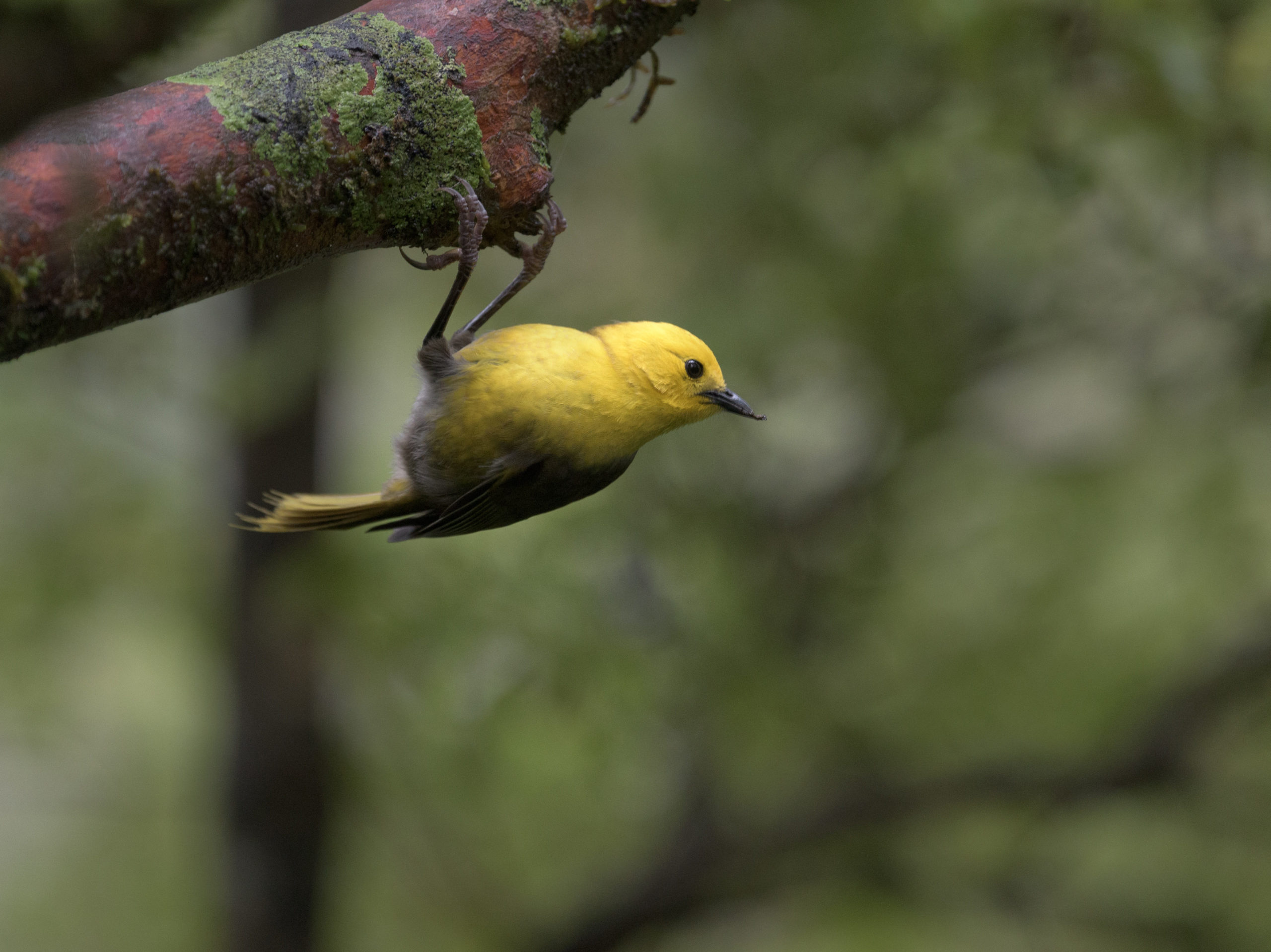
These rare birds, with a total population of less than 5,000, are unique to Aotearoa New Zealand. The loss of this bird in New Zealand would be a loss for the world.
How can you help out our mohua?
If you’d like to see New Zealand’s mohua population grow, the best way to help is by making their habitats safe.
If you live in an area close to a mohua population, you can do this by setting traps in your backyard. You can also get involved with your local trapping group such as the Routeburn Dart Wildlife Trust in Southland and the Central Otago-Lakes Forest & Bird in Makaroa Valley.
Find your local trapping group by using our map. You can also donate to the Mohua Charitable Trust.

